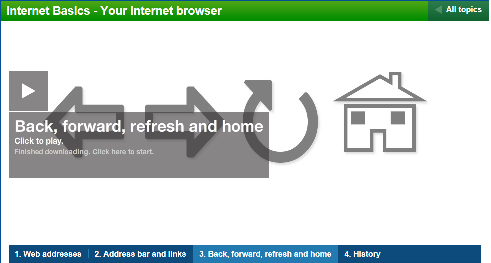To support the upcoming inaugural Hatua Training Session, we thought it would be a good idea to start off by highlighting a good source for information to teach yourself how to work, play, and stay safe online.
The BBC has a very good website called WebWise which aims to cover all aspects of online life and, as part of this, they have a whole section full of online courses :
Here, you can find a whole range of easy-to-use interactive tutorials that give you lots of basic information to help understand how to use your computer, get online, and start using the Internet. We would highly recommend this as a good place to go for anyone looking to get started using ICT.









